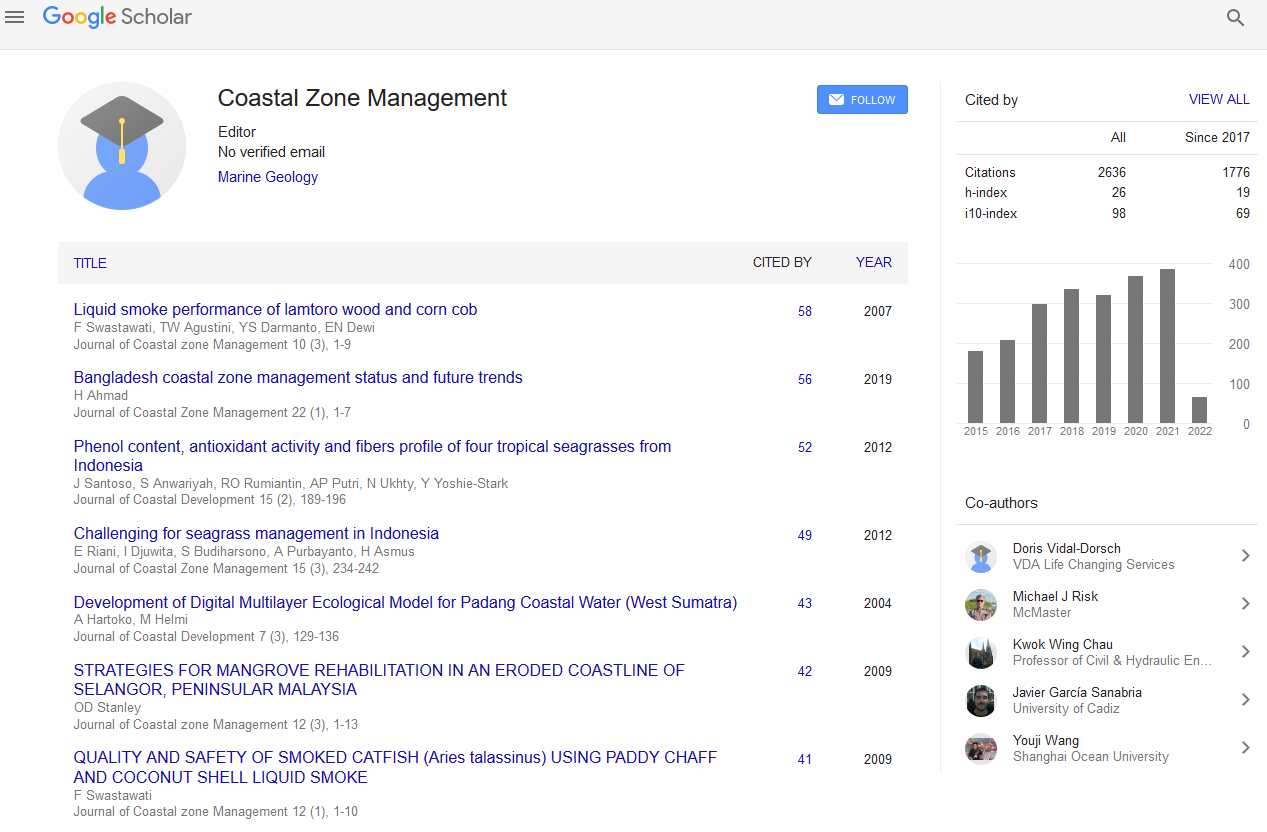Indexed In
- SafetyLit
- RefSeek
- Hamdard University
- EBSCO A-Z
- OCLC- WorldCat
- Publons
Useful Links
Share This Page
Journal Flyer

Open Access Journals
- Agri and Aquaculture
- Biochemistry
- Bioinformatics & Systems Biology
- Business & Management
- Chemistry
- Clinical Sciences
- Engineering
- Food & Nutrition
- General Science
- Genetics & Molecular Biology
- Immunology & Microbiology
- Medical Sciences
- Neuroscience & Psychology
- Nursing & Health Care
- Pharmaceutical Sciences
Abstract
Emerging technologies to manage climate change in coastal areas- Jose Simao Antunes do Carmo- University of Coimbra
Jose Simao Antunes do Carmo
Tens of millions of people living in coastal zones will be affected in the next few decades by climate change and coastal flooding due to sea-level rise and associated increases in wave action and surges. The issue of sea-level rise is complex and produces a range of environmental problems. As the sea level rises, the water depth increases and the wave base becomes deeper; waves reaching the coast have more energy and therefore can erode and transport greater quantities of sediment. In the meantime, coastal habitats are facing increasing risks worldwide as a result of human action. These habitats provide a number of ecosystem services, or benefits, including coastal protection, fish production, recreation and other economic and cultural values. Therefore, the degradation of coastal habitats in various regions of the globe will result in damage of high economic and cultural value and a decrease in coastal protection, thereby increasing the risk of coastal flooding. In several countries, strategy studies have shown that managed retreat or do nothing options are the only cost-effective solutions to coastal erosion. Such options are often not popular and should be seen as possible alternatives, but should never be considered as unique or even priority. In fact, it is also recognized and many studies confirm that do nothing is usually the worst solution. Equally worrying is that, in coastal areas of several countries, both authorized and unauthorized privately funded coastal protection works are being implemented and in some cases without an understanding of the overall system dynamics. In the face of ongoing climate change and new uses of the coastal zones, the development of novel solutions to address coastal processes as an alternative to traditional coastal protection structures (seawalls, groynes and breakwaters) is becoming increasingly important. The innovative approaches seek to strengthen the benefits of traditional natural defences, such as beaches and natural dunes. These novel approaches are typically marketed as being characterized by lower environmental impacts, lower costs and easier implementation, and include submerged breakwaters made of geotextile tubes, beach dewatering, buffer zones and artificial or reinforced dunes. This work intends to discuss general guidelines on managing key processes of the coastal dynamics, and show how novel approaches can be combined depending on the types of coast, such as cliff coast, clayey bank coast, intertidal/ muddy coast, sand dune coast and sandy coast. This work also aims to alert coastal managers to an increased demand for accommodation alternatives in coastal areas. Measures that are less common today may become essential in the near future, such as building on pilings; building emergency flood shelters; tidal houses; houseboats and floating houses. An increasing demand for this type of housing and a reduction of current living conditions in coastal areas are foreseeable, especially from the middle of the present century.
Published Date: 2021-06-29;

